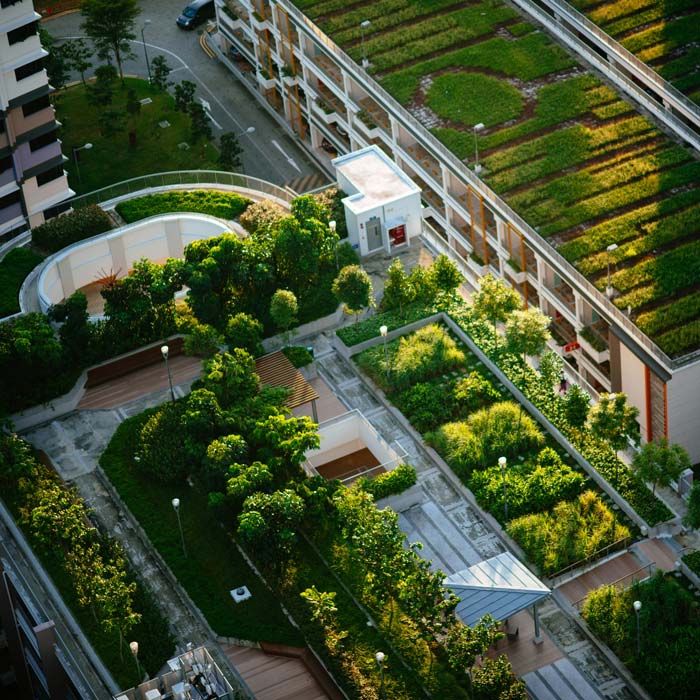7 Trends in Architecture Every Soon-To-Be-Graduate Should Know
Like any other field, architecture keeps evolving. Half a century ago, using lead-based paints was commonplace. Today, it’s banned due to health risks. Half a century ago, sustainable construction wasn’t even conceptualized. Today, you have to abide by certain sustainability practices in certain projects.
Of course, most trends aren’t 50 years old – and you may not even learn about such emerging trends when you study architecture. But if you want to be able to compete in today’s job market, your knowledge of these trends can easily set you apart from other candidates. It’s also crucial in building a successful career in architecture.
[ruby_related heading=”More Read” total=3 layout=1 offset=5]
Don’t think you have time to study these trends on your own? Consider leveraging the assistance of an online service like DoMyEssay, where you can request “Write my essay” and ask professionals to “write a speech for me.” This dual approach allows you to dedicate more time to studying the seven vital trends for every architecture student while ensuring your assignments and presentations are in capable hands. DoMyEssay connects you with professional helpers who can support your academic journey, making it easier to balance your workload.
Going Carbon-Neutral
The push for sustainability comes from both consumers and authorities. So, you can’t afford to overlook it in your career. Carbon neutrality is one aspect of it. It means that the construction project should limit and/or compensate for carbon emissions produced during it.
Achieving carbon neutrality requires a holistic approach that may include:
- Using sustainable alternatives to traditional construction materials, like hemp concrete and biocomposite
- Adapting or reusing existing buildings for new purposes instead of constructing new ones
- Opting for energy-saving materials and practices to reduce the building’s carbon footprint in the long run
- Using renewable power sources for transportation and construction
Designing for Climate Change
Climate change prompts more severe weather events, from more frequent and more powerful storms to heat waves and flash floods. You have to take those increasing risks into consideration.
The specific weather events you should account for will depend on the location, of course. Here are a couple of examples:
- Heat waves. The choice of materials should maximize isolation to keep the interior fresh without using an air conditioner.
- Floods. Avoiding concrete in gardens and adding green spaces on rooftops will help absorb rainfall and prevent flooding.
Leveraging AI for Tedious Tasks
Architecture is yet another industry that has been rocked by AI tools. Of course, generative AI isn’t going to replace architects from A to Z. Still, the technology has the potential to streamline routine tasks.
For example, marquee firms like London-based Zaha Hadid Architects already adopted AI-powered, data-driven tools in their operations.
In your case, you may not have access to cutting-edge tools like the one used by Zaha Hadid Architects. That’s why you should familiarize yourself with data-driven architectural design in general. You can also tinker with free-to-use generative AI tools to learn to create effective prompts.
Meeting Demand for Tiny Homes
Purchasing a three-bedroom, two-bathroom house has become an attainable goal for younger generations. So, those who want to become property owners turn to tiny homes as the next best thing. For example, a 200-square-foot cottage can cost around $60,000 to build.
Tiny homes are also gaining traction among those who want to buy or construct a vacation home without having the means to spend hundreds of thousands of dollars on it.
When it comes to designing a tiny home, ergonomics is everything. You need to make good use of the limited space. So, if you need to brush up on it, go ahead and do it – it’ll probably pay off.
3D Modeling and Printing
3D printing used to be exorbitantly expensive just 15 years ago. Today, however, it’s become a cost-effective alternative to construction from scratch.
As 3D printing skips many of the steps of traditional construction, labor costs associated with the project can be 50% to 80% lower. 3D printing also reduces waste produced during construction.
3D printing isn’t exactly a brand-new trend in architecture. A Chinese firm WinSun printed a whole five-storey apartment building back in 2015. However, it continues to gain traction. For example, 3D printing is currently being used to print a whole neighborhood in Texas. The project is heralded by a Danish architecture firm Bjarke Ingels Group (BIG).
If you want to be at the forefront of this architecture trend, your skill set should go beyond standard CAD software. Your blueprints and models should be compatible with available 3D printing technologies. Your choice of materials becomes limited as well.
Setting Buildings Afloat
From a floating city in South Korea to a public sauna in Seattle, buoyant buildings are no longer a thing of science fiction. These projects are one solution to a major problem architects face in densely populated urban areas: constructing new buildings with little space available.
Of course, floating buildings have to come with the infrastructure to access them without swimming. Plus, they have to be designed to be flood-proof and hurricane-proof. Otherwise, they won’t stay afloat during severe weather events.
On top of that, these floating buildings can also be combined with best sustainability practices. Those include recycled reinforced plastic, green roofs, and self-generated power.
Going Biophilic
Interacting with the natural environment has been proven to have benefits for both physical and mental health. Biophilic architecture aims to incorporate nature into the building design to improve the well-being of its occupants.
Biophilic architecture is a massive field of architecture that involves, among other things:
- Maximizing the natural light that enters the building
- Adding water bodies, fountains, aquariums
- Bringing vegetation to the indoor and outdoor spaces
- Creating self-sustaining ecosystems
- Leveraging biomimicry in the design strategy

Final Thoughts
As you can see, these trends are often interwoven into a single architecture project. You can be tasked with designing a tiny home that should be carbon-neutral, 3D printed, and adapted to extreme heat waves.
So, every soon-to-be architecture graduate should have one particular skill in their toolkit: the ability to take a holistic approach to every project. But to be able to do that, you need an intersectional understanding of all of these trends – and more.
Developing a holistic view takes time. But it is a great investment with even greater returns. So, if you have to choose between boring homework and bringing yourself up to speed on these trends, the latter is a wiser choice. And the best essay writing services can help you with the former! All it takes to get professional help is filling out an order form and choosing your expert.




